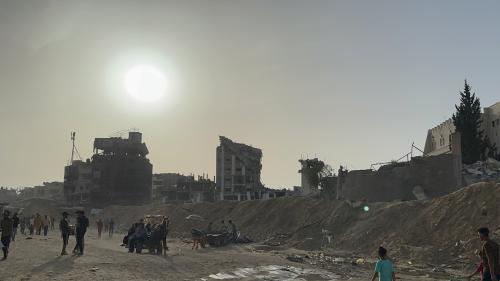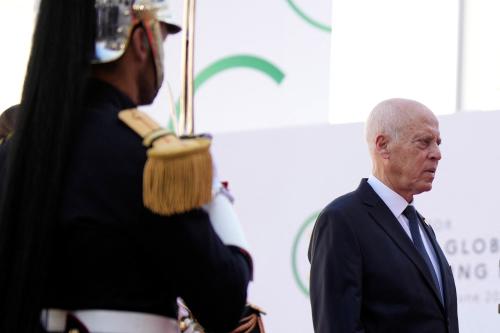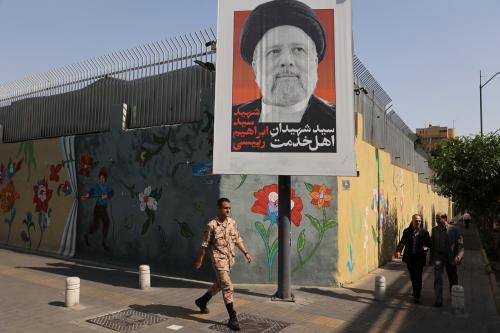Editor’s Note: This is the first in a week-long series highlighting Stephen R. Grand’s new book Understanding Tahrir Square: What Transitions Elsewhere Can Teach Us about the Prospects for Arab Democracy. Later this week, Brookings will host a book launch for Grand, a nonresident senior fellow with the Saban Center– and former director of the Project on U.S. Relations with the Islamic World—on April 23, 2014 (there’s still time to register here!).
The Ukrainian crisis has prompted considerable speculation regarding the spillover effects on the P-5+1’s negotiations with Iran. Far less attention has been paid to the implications the success of Ukraine’s Euromaiden movement may have for Iran’s internal developments.
The New Republic last week devoted an entire section to what it terms “The Age of Revolution,” with articles on the recent civic protests in Ukraine, Venezuela, and beyond. The section concludes with a “Sack List,” speculating about what other regimes might be vulnerable to revolution from below, with Iran receiving a mention. Is Iran at risk of a second Green Revolution?
My colleagues at the Brookings Institution’s Saban Center for Middle East Policy, Suzanne Maloney and Kenneth Pollack are far better equipped to answer that question. What I can offer is some context, based on my recent research for my new book on the experience with democratization in other regions of the world.
Today, I will start by noting that the Middle East is not the first region of the world to democratize, but it is the last. Back in the early 1970s, only about 40 countries were considered to be democratic, and most were located in Western Europe or North America. Democracy, it was presumed, was the product of either cultural values unique largely to the West or to the attainment of a certain level of per capita income.
Events were soon to prove both assumptions wrong. From the mid-1970s to the end of the 20th century, what has come to be known as the Third Wave of democratization washed across the globe, bypassing only the Middle East. Beginning with Portugal and Spain’s transitions to democracy, it quickly spread to Latin America and parts of East Asia, then to Eastern Europe and a few successor states of the disintegrating Soviet Union, and then to Sub-Saharan Africa.
By 1999, 120 countries were categorized by Freedom House to be at least electoral democracies. The list included countries from every region of the world, except the Middle East (save for Israel), and some of the world’s poorest countries.
The point for today is that the Middle East remains the outlier in the global trend toward democracy.



Commentary
Is Iran Next?
April 21, 2014